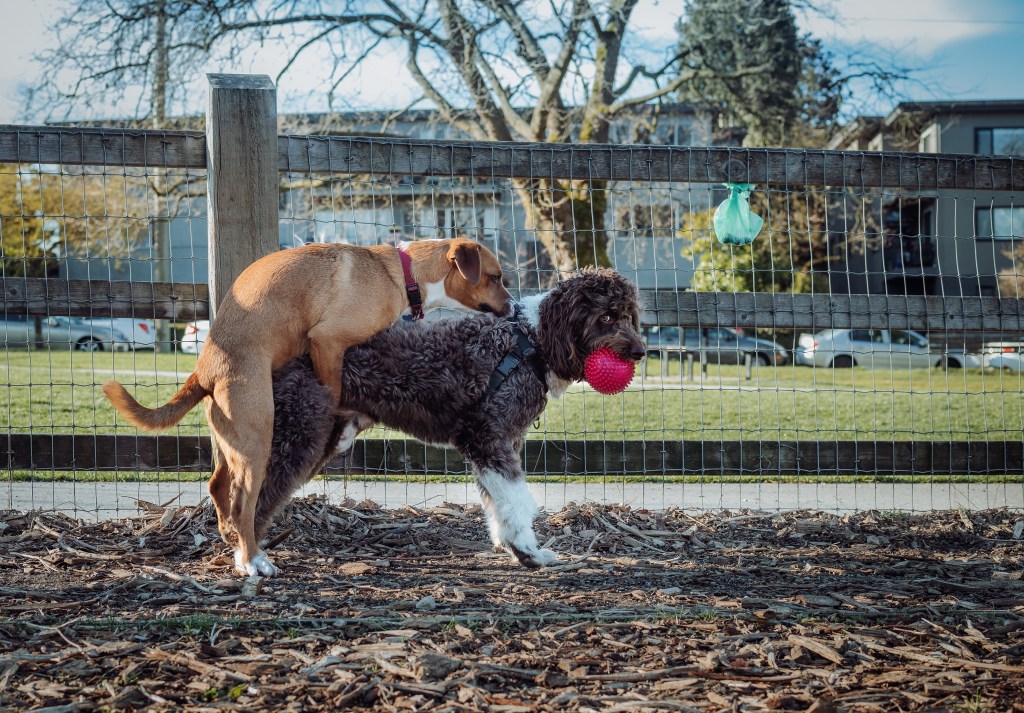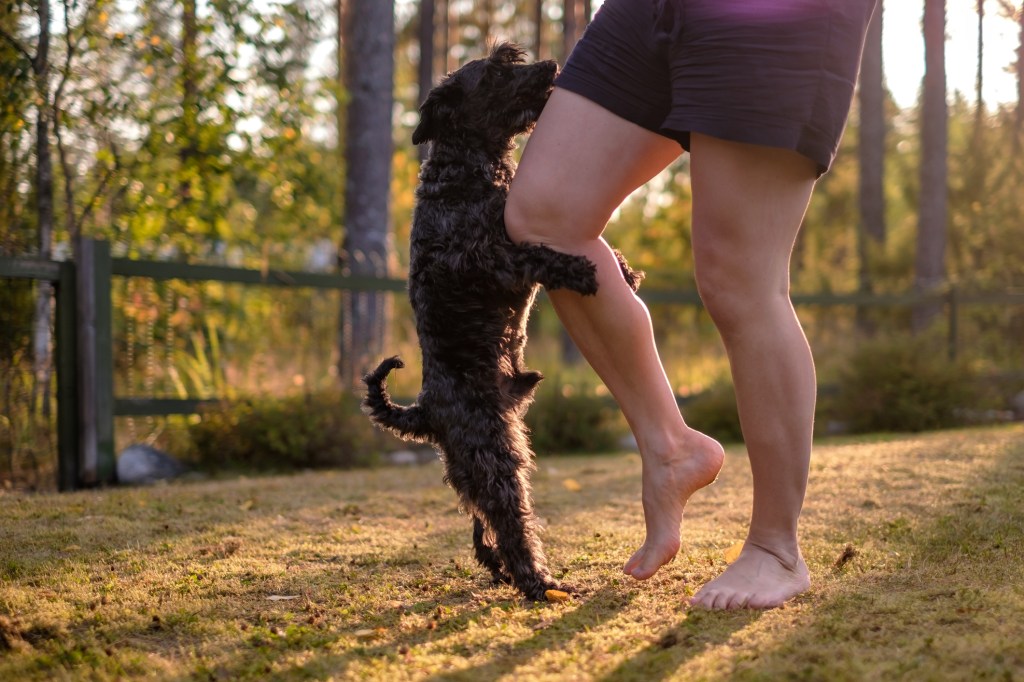Dog humping, also known as mounting, is an embarrassing and confusing behavior for dog parents. While it can be a source of amusement in certain situations, excessive or inappropriate humping can become a problem. Understanding the causes behind this behavior is essential in order to address it effectively. We’ll explore the various reasons why dogs engage in humping and provide guidance on how to stop it.
What Causes Dog Humping

Hormones
One of the primary causes of mounting in dogs is hormones. Unneutered males and unspayed females are more likely to exhibit humping behavior due to the influence of sexual hormones. This behavior is often observed in intact dogs during their mating season or when they encounter another dog in heat. Spaying or neutering your dog can help reduce the frequency and intensity of humping associated with hormonal influences.
Stress
Stress can also trigger mounting in dogs. Dogs may resort to this behavior as a way to cope with anxiety or uncertainty. Changes in the household — such as a move or the addition of a new family member — can lead to increased stress levels in dogs, which may manifest as humping. Addressing the underlying causes of stress, while providing a calm and structured environment, can help alleviate this behavior.
Excitement
Humping can sometimes be a result of excessive excitement. Dogs, especially puppies, may engage in mounting when they become overstimulated during play or social interactions. It is essential to teach dogs appropriate ways to channel their excitement and provide them with alternative outlets for their energy, such as interactive toys or engaging in mental and physical exercise.
Dominance
Dominance-related humping is often seen in situations where dogs are vying for social status or asserting their authority. This behavior is not limited to intact males and can be exhibited by both male and female dogs. Establishing clear boundaries and promoting a structured hierarchy within your household can help address dominance-related humping. Consistent obedience training, rewarding desired behaviors, and discouraging inappropriate humping can be effective in managing this issue.
Medical Issues
In some cases, humping can be triggered by underlying medical conditions. Skin allergies, urinary tract infections, or other discomforts in the genital area can cause dogs to engage in humping behavior. If you notice persistent or sudden changes in your dog’s humping behavior, it is important to consult with a veterinarian to rule out any potential medical issues.
How to Stop Dog Humping

Verbal Commands
Training your dog with appropriate verbal commands can help redirect their behavior when they start to hump. Teach your dog commands such as “sit,” “down,” or “leave it” to redirect their focus and interrupt the humping. Consistency and positive reinforcement are key in reinforcing these commands effectively.
Offer Rewards
Positive reinforcement is an effective tool for modifying your dog’s behavior. When your dog responds to redirection and stops humping, reward them with treats, praise, or affection. This reinforces the desired behavior and helps your dog understand that engaging in humping is not appropriate.
Seek Professional Help
If the humping behavior persists despite your efforts, seeking professional help from a certified dog trainer or animal behaviorist can provide valuable guidance. These professionals can assess the underlying causes of the humping behavior and create a tailored training plan to address it effectively. They may also recommend additional strategies or exercises to manage the behavior.
Dog humping can stem from various causes such as hormones, stress, excitement, dominance, or underlying medical issues. Understanding the underlying reasons behind this behavior is crucial in addressing and managing it effectively. By employing techniques such as verbal commands, rewards, and seeking professional help when needed, dog parents can help their furry companions develop appropriate behaviors. Remember, patience, consistency, and a compassionate approach are key when working to modify your dog’s humping behavior.










